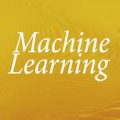Background and Significance: Selecting cohorts for a clinical trial typically requires costly and time-consuming manual chart reviews resulting in poor participation. To help automate the process, National NLP Clinical Challenges (N2C2) conducted a shared challenge by defining 13 criteria for clinical trial cohort selection and by providing training and test datasets. This research was motivated by the N2C2 challenge. Methods: We broke down the task into 13 independent subtasks corresponding to each criterion and implemented subtasks using rules or a supervised machine learning model. Each task critically depended on knowledge resources in the form of task-specific lexicons, for which we developed a novel model-driven approach. The approach allowed us to first expand the lexicon from a seed set and then remove noise from the list, thus improving the accuracy. Results: Our system achieved an overall F measure of 0.9003 at the challenge, and was statistically tied for the first place out of 45 participants. The model-driven lexicon development and further debugging the rules/code on the training set improved overall F measure to 0.9140, overtaking the best numerical result at the challenge. Discussion: Cohort selection, like phenotype extraction and classification, is amenable to rule-based or simple machine learning methods, however, the lexicons involved, such as medication names or medical terms referring to a medical problem, critically determine the overall accuracy. Automated lexicon development has the potential for scalability and accuracy.
翻译:背景和意义:为临床试验选择组群通常需要花费昂贵和费时的人工图表审查,导致参与程度差。为了帮助这一进程自动化,国家国家实验室临床挑战(N2C2)通过界定临床试验组群选择的13项标准以及提供培训和测试数据集,共同应对挑战。这一研究是N2C2挑战推动的。方法:我们将任务分成13个与每项标准相对应的独立子任务,并使用规则或监督的机器学习模式执行次级任务。每项任务都严重依赖任务特定分类法形式的知识资源,我们为此制定了新的模型驱动的精确方法。这一方法使我们能够首先从种子组中扩大词汇,然后从清单中消除噪音,从而提高准确性。结果:我们的系统在挑战中实现了0.9003的总体F度,并在统计上与45名参与者中的第一个地方挂钩。模型驱动的词汇开发以及进一步调试基于培训的规则/守则,将总体计量法改进为0.9140,在挑战中过度采用最佳的数字结果。 讨论时,Coporforlical 选择了规则的准确性,例如精度、Corlical 直观的医学分类、Clical 选择。




